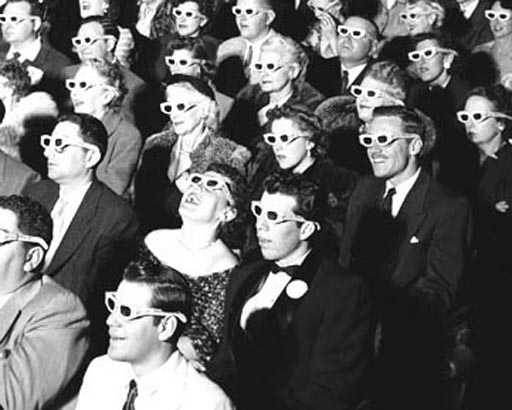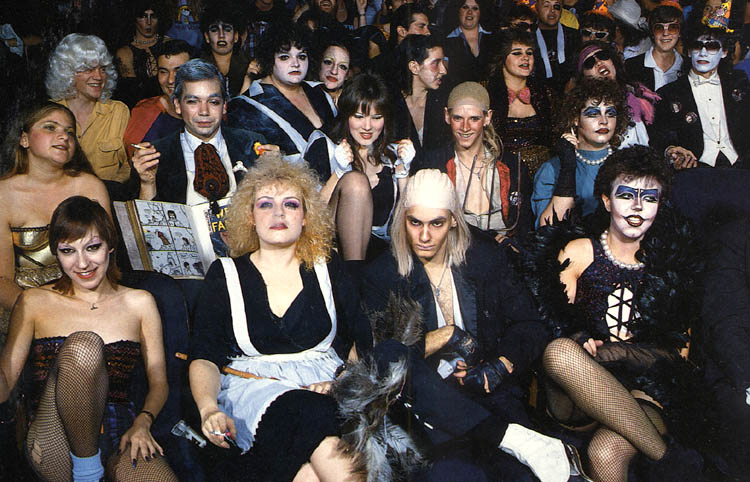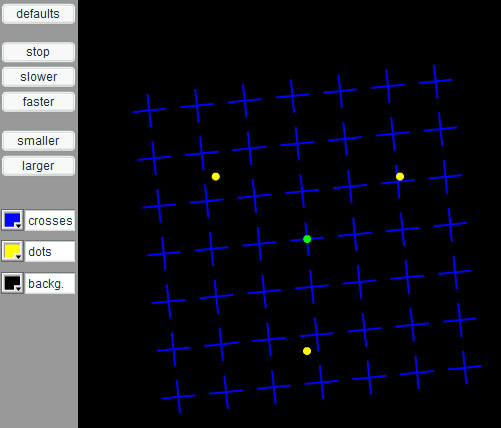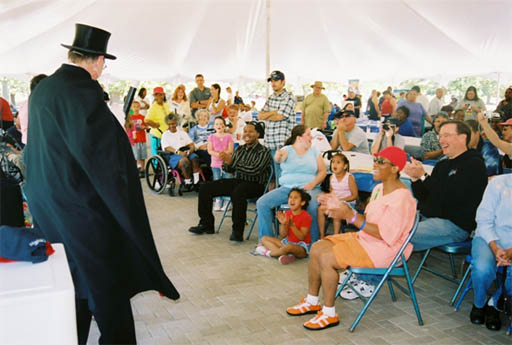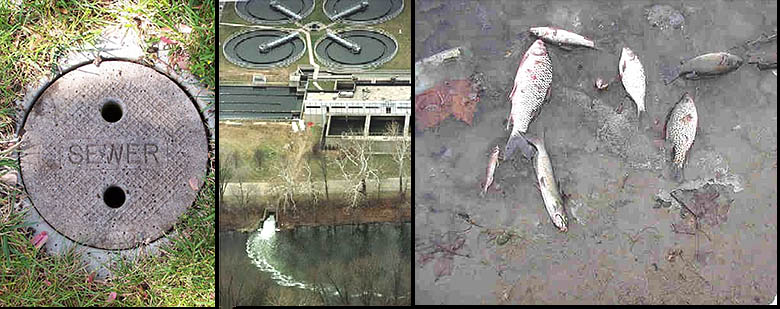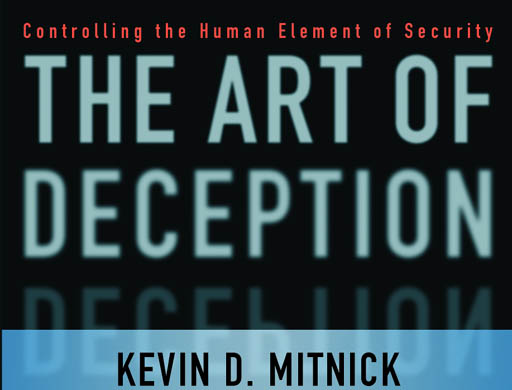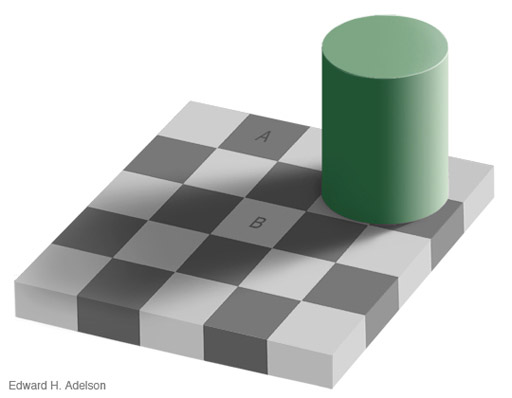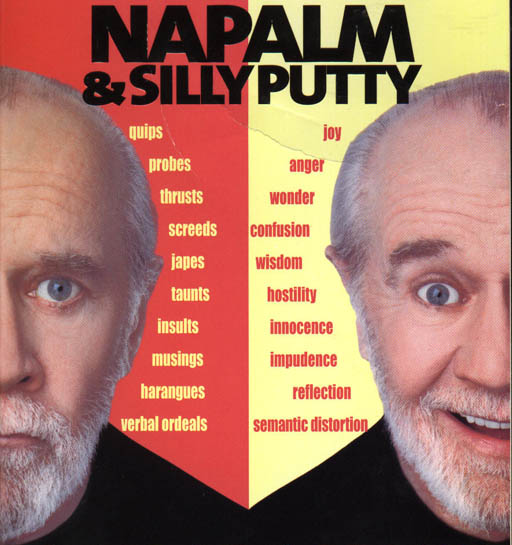|
Problem #1: Brains of
audiences (and consumers) want to be deceived
|
|
|
If an audience is to enjoy a movie or performance, they
normally must suspend critical judgment to do so. For example, these folks
are watching a movie, which itself is nothing but a series of still images
with sound, and these cheap 3-d glasses don't help much; yet, you see
emotions.
In addition to a desire to be fooled to be entertained,
the brain is also trying very hard to make sense of the world around it.
It's easier for the brain to interpret what it is seeing as lifelike rather
than seeing it for what it is-- a series of projected still frames for
film or a scanning beam of electrons lighting up fluorescent dots on the
television.
|
|
Below is the audience for the Rocky Horror
Motion Picture Show. As you can see, there's a strong desire to "believe"
in the fantasy of the movie.
|
|
|
|
Suspension
of Disbelief: This is a term used by film critics
to describe what film goers must do to stay engaged in the plot of the
movie. Besides ignoring the technology that is making the action on the
screen, we also must "suspend our disbelief" and believe in
the story and characters. For example, when watching Pirates of the Caribbean,
we must believe Johnny Depp is a pirate. We also must believe that Davey
Jones (below) is real, at least real enough to scare us.
|
|
|
|
|
Every day we condition ourselves to suspend critical thinking
in order to enjoy what we see on television. For example, we can't watch
The Simpsons and be thinking it's just an electronic signal from
a satellite dish. We also can't think about the artists drawing the characters.
We have to believe that these characters are real to enjoy the story.
|
|
|
When watching music videos, I'm always disappointed
that most singers are allowed to lip sync to the music. Most viewers, however,
accept this as singing. This lack of critical observation lets imposters
get by.
These images are of the group Milli Vanilli,
which won a Grammy award but had it revoked when it was discovered that
the voices at their concerts and on their records were other singers. |
|
Problem #2: Brains are
fooled by experience.
|
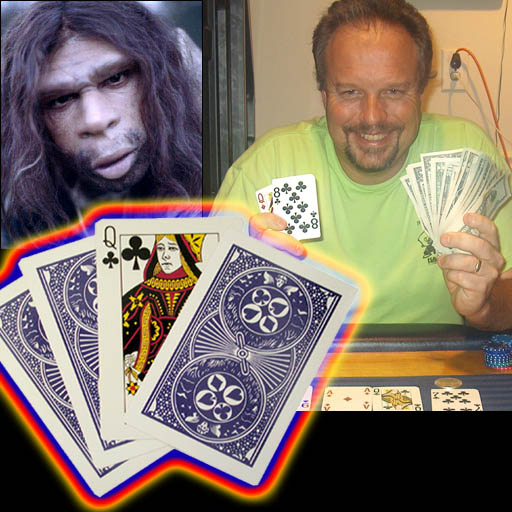 |
Caveman vs. Poker Winner?:
Who would you think would be more fooled by a card trick, a caveman or
yourself, even assuming that you are a seasoned poker player? Let's find
out...
What does the back of the Queen of Clubs look like?
What does the covered portion of the Queen of Clubs look
like?
What might the back sides of the other cards look like?
Your familiarity with cards will cause you to be fooled.
Card tricks are often done with altered cards, called gaffed cards. For
example, the back of this Queen of Clubs could be a Jack of Diamonds.
The other side of the right card may be identical to the side you see.
In other words, experience gives you a preconceived idea of what playing
cards are suppose to look like and that will cause you to be fooled. The
caveman, therefore, may be able to spot the trick much easier.
|
 |
The card shark here wants to bet that you can't figure
out where the ace is when he turns over the cards. The game is called
the Million Dollar Monte.
Before I ask questions, you should watch this trick done
on YouTube at
http://www.youtube.com/watch?v=GBDo3UPpdZs
What are the three cards that you see on the table?
If you said, 3 of clubs, 2 of clubs, and ace of diamond,
then you are using your experience with cards to identify these cards;
however, you would be wrong.
In the next chapter, "Step Behind the Scenes",
I will reveal the secret to this trick.
|
| A rotating mask shows that the brain will
force itself to see what it normally sees, which is a face from the outside,
not from the back even though we know we are looking at the back side. Below
shows the sequence. You will notice the right mask feels like it is facing
outward despite knowing that it is facing inward. To see the animated rotation
visit this site: http://www.kyb.mpg.de/bu/demo/mask/index.html.
|
|
|
 |
Chemistry Example:
This looks like the Corvette I had in the 70's (You can tell I wasn't into
conservation then). Like all cars at that time, chrome bumpers and chrome
trim were made from chrome plated steel. To polish the chrome I always used
a chrome polish, which was a very fine abrasive. In the 90's I owned an
86 Jaguar (roll mouse over Corvette to see it). The chrome trim around the
windshield on the Jaguar was dull, so I used some chrome polish. To my dismay,
the "chrome" came off with just a few rubs revealing not steel
but plastic. My experience with older cars fooled me into thinking that
shiny trim was chrome plated steel, when it was actually just spray painted
plastic. The automobile makers fooled people like me who were accustomed
to chrome. |
|
Problem #3: Brain is
fooled by optical illusions
|
|
|
Optical illusions reveal the flaws in our
perceptions. Sometimes magicians and advertisers take advantage of techniques
that fool the mind. One website has some excellent examples of optical illusions.
The image on the left is from one animation that shows how motion of the
blue crosses can cause your mind to become blind to the stationary yellow
dots. Here is the URL: http://www.michaelbach.de/ot/mot_mib/index.html
Here is the URL to the gallery of optical illusions:
http://www.michaelbach.de/ot/index.html |
|
|
This is an image from Michael Bach's website. It shows
the after image from our eyes. The pink dots are disappearing one by one,
but if you stare at the cross in the middle, you will think you see a revolving
green dot and the pink dots disappear. In other words, what is there you
don't see, and what is not there you do see! |
|
|
Our brain works hard to decipher the world around us even
when the lighting is not uniform. For example, we see that the green cylinder
is blocking light causing the tiles in the shadow to be darker. Our brain
is not fooled by this, we still think that the tile floor is just made
of two colors of tile- an off-white tile and a medium gray tile. This
type of brain power is helpful but can be fooled. Which of the two tiles
are darker, tile "A" or tile "B"?
Roll mouse over the picture
to see A and B only. That will answer the question.
|
|
|
Because we have two eyes, we are always seeing
double, but the brain suppresses one of the images while giving us the illusion
of depth. If you were to hold your two hands in front of you (like in the
picture) but focus on the computer screen in the background, you will see
a floating "sausage" because the brain can't decide which eye's
image to suppress. |
Problem #4: Out of Sight Out of Mind
To impress your audience, citizen. or consumer, show
them the good but hide the bad. What is hidden does not get evaluated.
|
|
|
Hide in Clothes:
There's a reason that magicians wear hats, capes, and long sleeves. Most
of their tricks depend on hiding something from the audience. For example,
their clothes hide the items that disappear or the items that they make
appear. We perceive magic because the secret of the trick is hidden from
our view. |
 |
Hide in River:
Manufacturers are presenting us with all kinds of neat products, but our
enthusiasm for a product would be diminished if we knew the maker of that
product was polluting our rivers and drinking water. Rivers are a favorite
hiding place for industrial waste because it usually hides it and sends
it down river. EPA (Environmental Protection Agency) uses
aerial photography to detect pollution because at the ground level it may
not be visible. Unfortunately, many polluters release pollutants at night. |
|
|
Hide in Ground: Polluters
also love to use the ground to hide pollutants. After it is buried, it is
hard for us to see the pollutants leach into the ground and into ground
water. |
|
Flush Down the Drain:
Another favorite hiding place for everyone is
to flush what we don't down the drain. A sewer is better than a river
because not only does it flush the waste away from the source, it's also
out of site.. The Guide Corp., a plant for automotive plating, agreed
to a $14 million settlement for a toxic substance they poured into the
sewer system. This substance killed the bacteria in the city's water treatment
plant, which treats sewage and then releases it into the river. The treatment
plant (below) didn't test the treated sewage and let toxic water flow
into the river. 4.6 million fish (187 tons) were killed in the White River
that runs through Indiana.
|
|
|
|
Problem #5: The Power
of Suggestion & The Placebo Effect
|
|
|
There's a TV show hosted by magicians Penn & Teller
called B.S. It is an exposé on various subjects. They talked about
the power of suggestion as being a big factor why people can be fooled.
In this episode they had someone dressed up with lab coat and tie and
look like a doctor or chemist. Click the play button to move through the
pictures to see how people were fooled by magnets and snails. By the way,
even if the magnets were real, there would be no affect.
The people also talked about how much they would pay for
some of these bogus therapies (around $30).
Even though these are examples of individuals, whole groups
(audience) can also be fooled by the power of suggestion.
|
|
|
The Placebo Effect: Many interesting studies
reveal the human's ability to feel better just because they believe that
they should feel better. A placebo is normally thought of as a "sugar
pill", but placebos can be any kind of treatment that, in itself, has
no therapeutic value; however, if the person or audience believes it should
work, many will show improvement. This relates closely to the power of suggestion
that is given when they receive the fake "treatment." |
|
Problem #6: The Bad
of Being Good.
|
|
|
Kevin Mitnick is an infamous computer hacker
(served time in prison for computer hacking). You would think his computer
skills gives him the most ammunition when breaking into a company's computer
system. In his book he points out that it is much easier to take advantage
of human goodwill. People want to trust those who appear courteous, helpful,
or honest. People also want to help those in need. Unfortunately, con artists
exploit these good qualities in people. |
|
|
Can You Help Me?:
For example, here's a cheerful lad who is burdened with books. He's standing
at the entrance where people are using their ID badges to open the door.
He asks, "I can't reach my badge right now, could you open the door
for me?" What would you do? Most people will say, "Sure."
Our natural instinct is to be helpful and trusting and
open the door . We don't know if this lad is good or bad; we just want
to believe he is good. Techniques like this one was revealed by the Kevin
Mitnick as ways to breach security areas, but it could be used for anything.
|
|
Problem #7: Audience
and Consumers are Too Forgiving of Word Misuse
|
|
|
I grew up in Phoenix, Arizona and understood
western lifestyles. In the 80's I heard a lot about people moving to McCormick
Ranch in the town of Scottsdale, just east of Phoenix. Scottsdale had a
cowboy history so I thought it was nice that some people got to live on
a ranch. I envisioned several ranchettes (small ranches) that families own.
If you've ever seen a western movie, you know what a ranch is. I finally
got to visit McCormick Ranch and was quite shocked to what they called ranch
living (roll cursor over image to see what they call a "ranch").
|
|
|
In the valley there are hundreds of housing
developments that call themselves ranches. Sometimes the land where the
houses were placed had been a ranch. For example, McCormick Ranch above
had been a real ranch. However, just because the land had been a ranch doesn't
mean the place can still be called a ranch. We also have housing developments
named after farms because there once was a farm there. Both of these add
insult to injury because they not only wiped out a ranch or farm, they also
stole their name. It's like having Disneyland being replaced by a housing
development that then calls itself Disneyland Estates. |
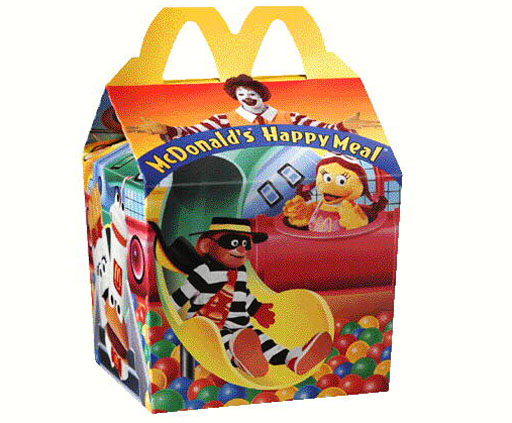 |
The problem is that sellers want to romanticize
or embellish everything. They use words, images, and music, but lets focus
on the words. Upon hearing positive words, our brain usually can't help
but bring forth some positive responses. Unfortunately, that can cloud our
judgment. |
|
|
How many things are described as gold that are not gold?
A lot.
We all like gold, so we accept the use of the word even
when it's a stretch of the meaning.
|
|
|
Euphemisms and doublespeak: Correct words
will often communicate too well, so other, more vague words are used to
soften the meaning. Examples are: Neutralize the target (sounds like giant
Alka-Seltzer tablets to me), but means kill the enemy. Collateral damage
means destruction and death to innocent bystanders. Pacification means to
kill or disarm insurgents to obtain peace. Downsizing & rightsizing
mean layoffs . |
|
|
Keeping on the topic of military doublespeak,
comedian George Carlin had a famous skit where he talked about how the description
of mental problems suffered by returning soldiers has changed. In World
War I, it was called Shell Shock (you can envision falling shells and the
shock of experiencing that). In World War II, it was called battle fatigue
(soldiers were simply tired of doing battle). In the Korean War it was called
Operational Exhaustion (no battle just an operation). In the Vietnam War
it was called Post-traumatic stress disorder (it's mostly just stress).
Now it's mostly referred to as PSTD. The letters hardly convey anything.
Things like this probably inspired others to write a book on doublespeak.
(Roll cursor over image). |
|
Solution: Time to Grow
Up
|
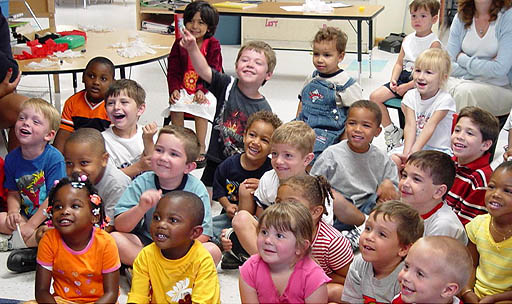 |
These kids are enjoying a magic show. The
fun is believing in the magic. That's great for entertainment purposes,
but when more important matters are at stake (like the environment, what
we buy, and laws), we must broaden our attention beyond the frills and thrills.
In other words, as an audience we must grow up. Besides, knowing what goes
on behind the magic can be fun too. |
|
|
